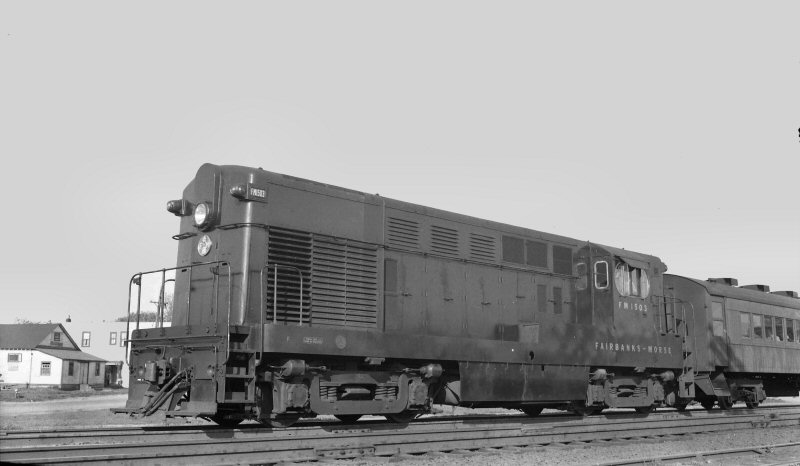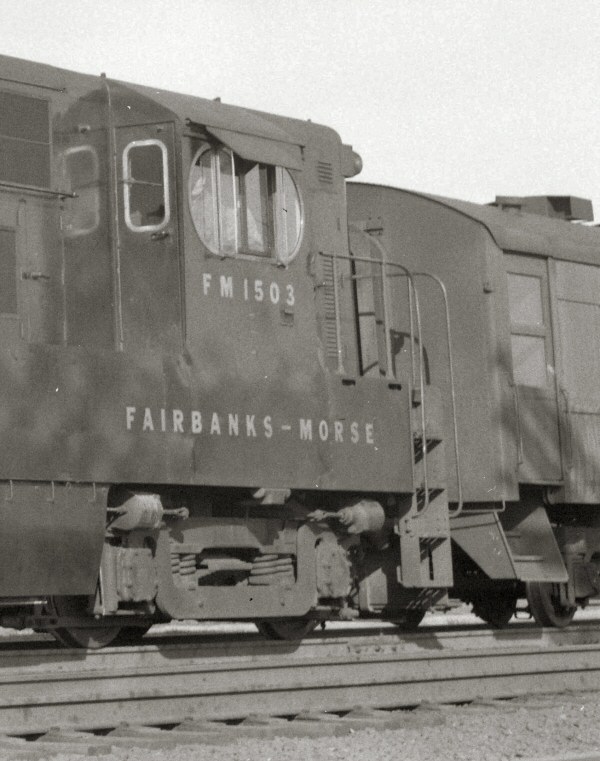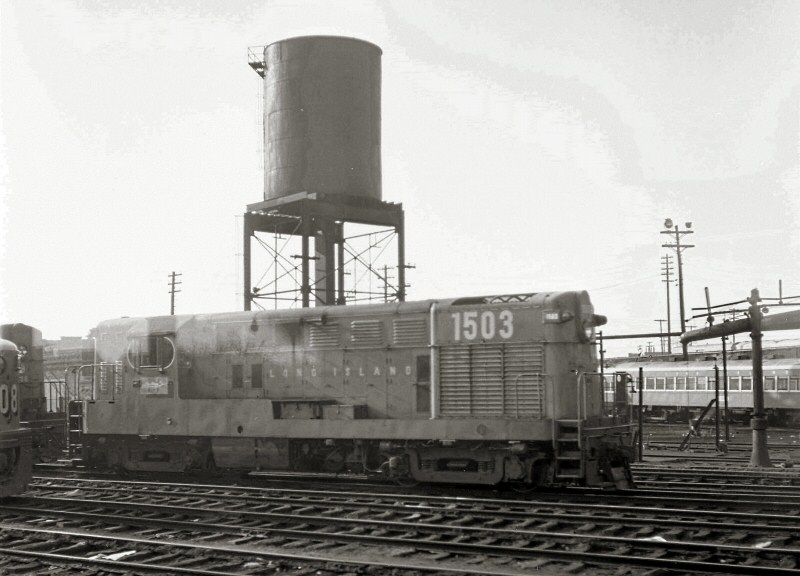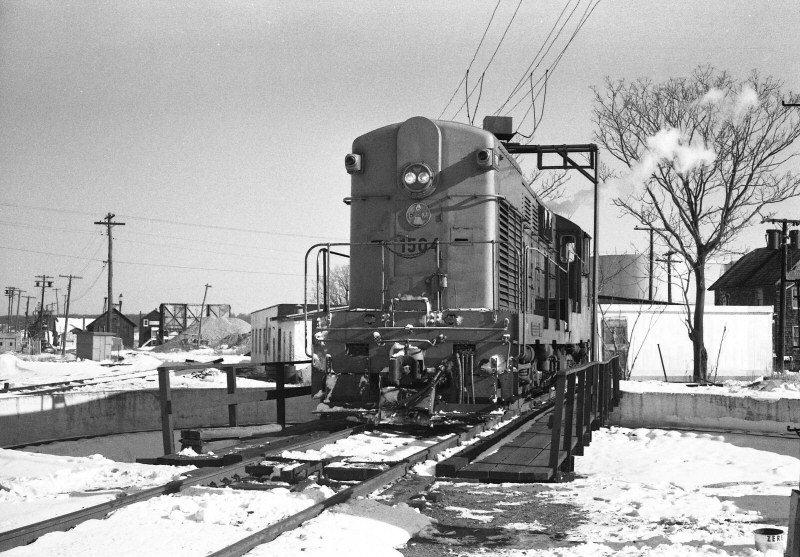That seemed to be F-M's style, to put the dynamic brake resistors right in front of (or behind, if the short hood is the front) the cab. In the C-line cab units, optional dynamic brake equipment was located right behind the cab. In fact, a customer could add dynamic brakes later, because the space for it was there. F-M actually had a neat idea with the C-Liners - the same carbody, choice of three different horsepower-rated engines, 1600, 2000 and 2400, flexibility about dynamic braking being factory installed, or added later; flexibility to add a steam generator and three-axle A1A rear truck at a later date - it's too bad that the timing was wrong. The C-Liner was introduced just as the road-switcher concept was becoming dominant. LIRR, as far as I know, never had problems maintaining the OP engines, although other railroads complained loudly about them.
These H-16-44s were real workhorses - they served in both freight and passenger service. The railroad used them to haul heavy rush-hour trains on the hilly, curvy OB branch; 11 and 12-car trains that would have rated a larger locomotive on the PJ branch. Unlike other roads like the NYC, the LIRR tended not to double-head locomotives on trains of over 9 cars or so. The H-16-44s could handle the job, and did it well.
Fairbanks-Morse forever!




